5 June 2016
Wader Quest
Ten years ago, one of the biggest environmental tragedies of all time occurred.
If you have not heard of Saemangeum that is a real tragedy in itself; that name should be etched on the lips of everyone who cares about the environment, birds and especially waders.
The estuary at Saemangeum in South Korea was one of the biggest and most important stop-over sites for migrating waders on both north and south migrations in the Yellow Sea region, some 330,000 individual waders depended on this estuary annually between 1997 and 2001.
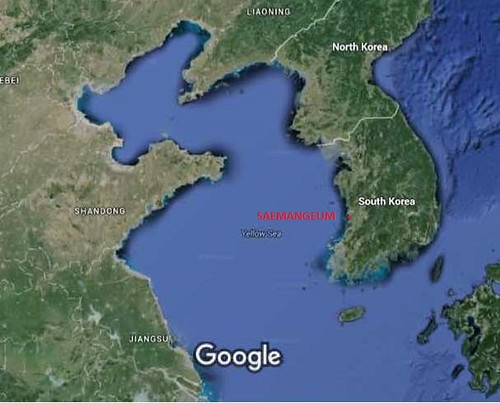
Yellow Sea with position of Saemangeum marked ? Rick Simpson – Wader Quest.
In that total was around 30% of the entire population of Great Knots Calidris tenuirostris in the world, about 93,000 individual birds.
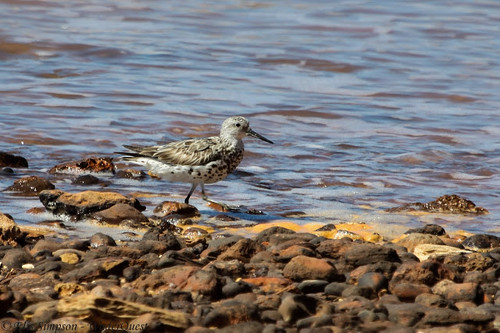
Great Knot ? Rick Simpson – Wader Quest.
It was also an important site for the Spoon-billed Sandpiper Calidris pygmaea (formerly Eurynorhynchus pygmeus) which has become an icon of wader conservation as it teeters on the edge of extinction.
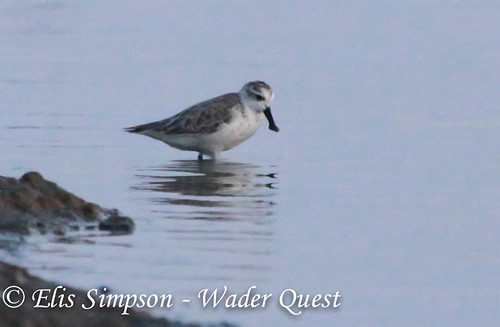
Spoon-billed Sandpiper ? Rick Simpson – Wader Quest.
In their wisdom (or complete lack of it), and claiming that these thousands of birds would find elsewhere to feed and rest, the South Korean government decided to build a barrier across the estuary mouth to prevent the tide from entering so they could develop the land. This work was completed in April 2006.
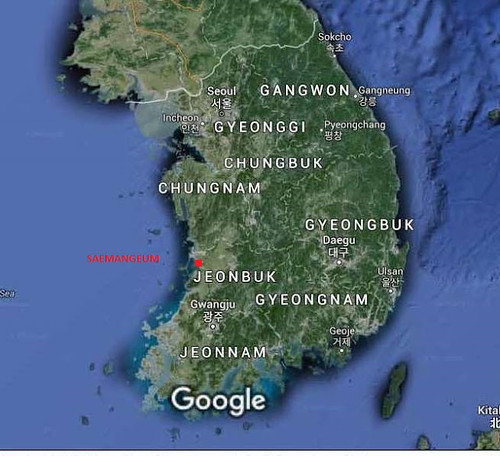
South Korea showing the position of Saemangeum; the barrier can actually be see and a horizontal Y next to the red location dot. ? Rick Simpson – Wader Quest.
In two years the number of birds at Saemangeum fell by 130,000 individuals and by 2014 there were just 5,000 birds!
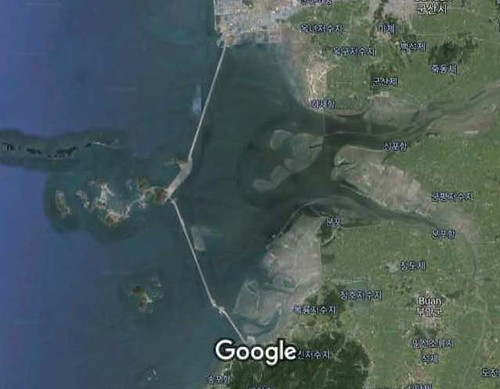
Closer view showing the barrier and the area to the right of it that was destroyed ? Rick Simpson – Wader Quest.
Did the birds go elsewhere as predicted? There is no evidence to suggest that they did as counts in alternative areas remained unchanged and the loss in numbers coincided with reductions in population size on non-breeding grounds such as Australia.

A flock of Great Knot. Photo: Elis Simpson

The same flock with 25% wiped out. Photo: Elis Simpson
Peak numbers of bird species at Saemangeum were recorded in 2006 and the % loss recorded in 2014.
| Species | 2006 count | loss in 2014 | |
| Terek Sandpiper Xenus cinerea | 3,855 | 100% | |
| Grey-tailed Tattler Tringa brevipes | 430 | 100% | |
| Broad-billed Sandpiper Calidris falcinellus | 338 | 100% | |
| Sanderling Calidris alba | 222 | 100% | |
| Eurasian Curlew Numenius aquarta | 213 | 100% | |
| Spoon-billed Sandpiper Calidris pygmaea | 31 | 100% | |
| Nordmann’s Greenshank Tringa guttifer | 14 | 100% | |
| Great Knot Calidris tenuirostris | 86,288 | 99% | |
| Eastern Curlew Numenius madagascariensis | 2,261 | 99% | |
| Eurasian Whimbrel Numenius phaeopus | 1,028 | 99% | |
| Ruddy Turnstone Arenaria interpres | 744 | 99% | |
| Sharp-tailed Sandpiper Calidris acuminata | 645 | 99% | |
| Lesser Sand Plover Charadrius mongolus | 5,914 | 98% | |
| Bar-tailed Godwit Limosa lapponica | 5,826 | 96% | |
| Dunlin Calidris alpina | 62,508 | 96% | |
| Common Greenshank Tringa nebularia | 912 | 94% | |
| Red-necked Stint Calidris ruficollis | 5,154 | 91% | |
| The only three species that escaped with less than 90% losses were | |||
| Grey Plover Pluvialis squatarola | 3,488 | 89% | |
| Eurasian Oystercatcher Haematopus ostralegus | 324 | 85% | |
| Kentish Pover Charadrius alexandrinus | 486 | 41% | |
Both Great Knot and Spoon-billed Sandpiper populations have been showing a steady but slow decline however both suffered severe and rapid declines in the late 2000s. The importance of the Saemangeumsite to these birds is clear and its removal from the flyway system had a catastrophic effect on both struggling species.
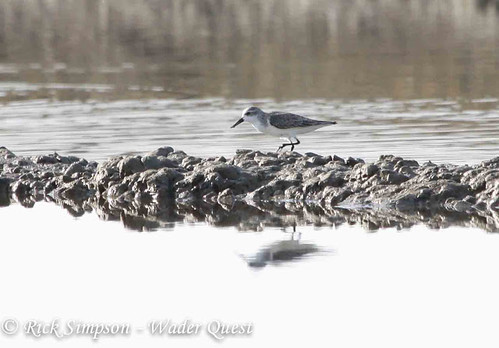
Spoon-billed Sandpiper ? Rick Simpson – Wader Quest.
But we should not overlook the effect that is had on more abundant species too; sixty-two thousand Dunlins all but disappeared along with around five thousand each of Red-necked Stint, Bar-tailed Godwit and Lesser Sand Plover. The figures in the table above are chilling.
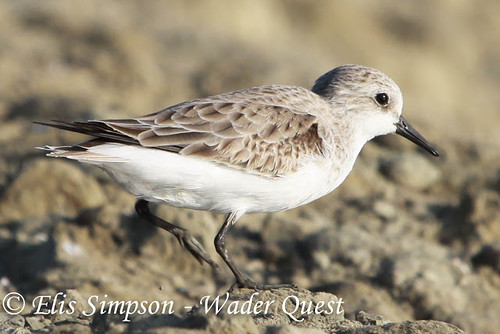
Red-necked Stint ? Rick Simpson – Wader Quest.
There is a lot of pressure on mud flats and the intertidal zone in general, they look like empty wastelands to the uninitiated, but they do in fact hold a diverse and vibrant fauna on which millions of birds worldwide depend.
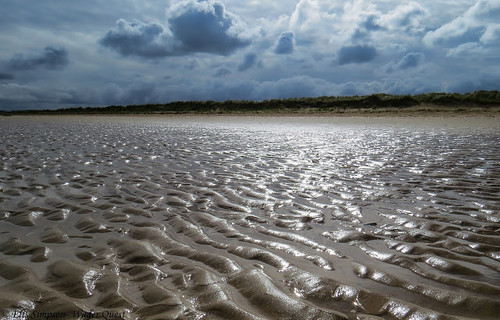
Titchwell, Norfolk, UK ? Rick Simpson – Wader Quest.
It is too easy to imagine that to some losing them would not be important, it is hard to grasp that birds that fly such long distances are unable to find alternative feeding grounds. It is relatively easy to turn people on to rainforest destruction, the very sight of a noble mahogany tree that is hundreds of years old crashing to the ground is heartbreaking and stirs the soul. It is much harder to love a bleak looking slab of mud.

The Wash at Snettisham, Norfolk, UK. ? Rick Simpson – Wader Quest.
But that is our mission friends, to go out there and make people love the mud.
Waders Need love too! Love your mud!
Reference: Reclamation of tidal flats and shorebird declines in Saemangeum and elsewhere in the Republic of Korea: Nial Moores, Danny I. Rogers, Ken Rogers and Philip M. Hansbro. Emu, 2016, 116, 136–146 http://dx.doi.org/10.1071/MU16006
Original article: http://www.waderquest.org/2016/06/lest-we-forget-tragedy-that-was.html




